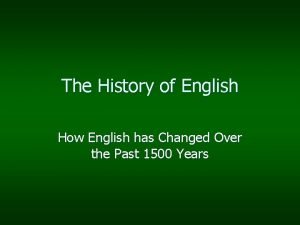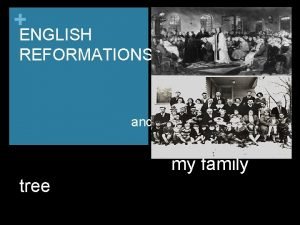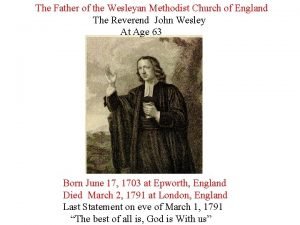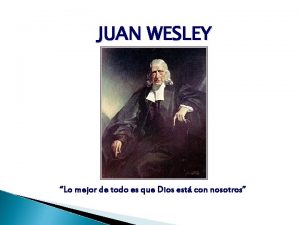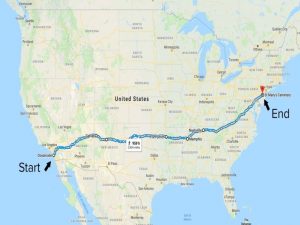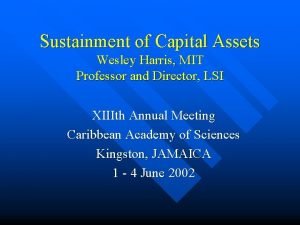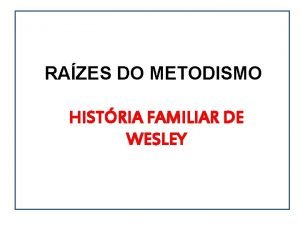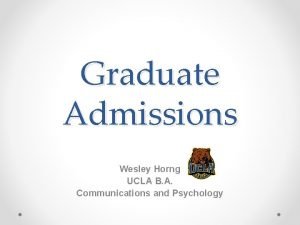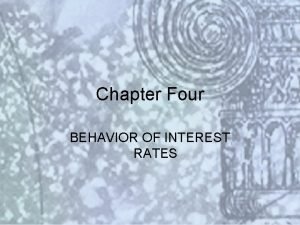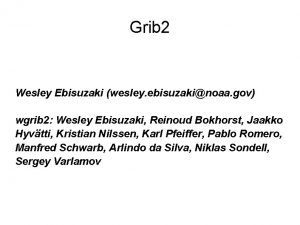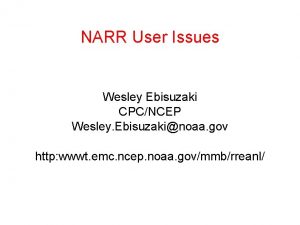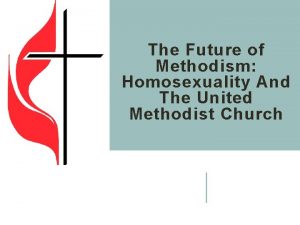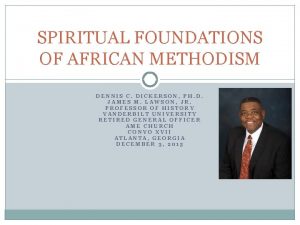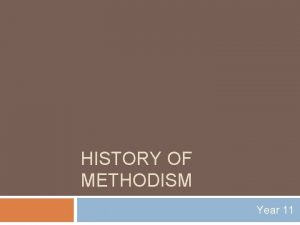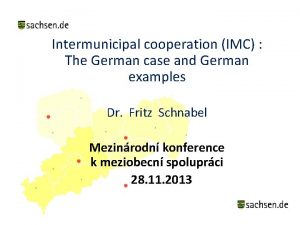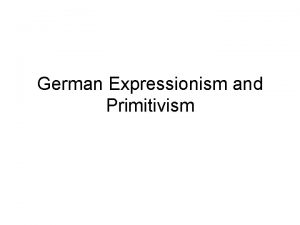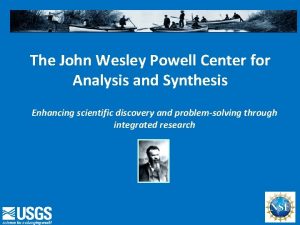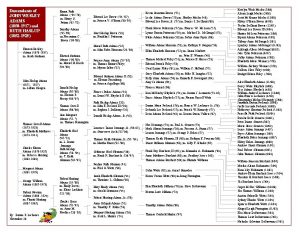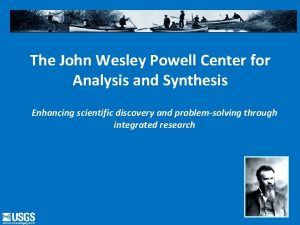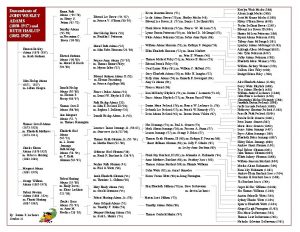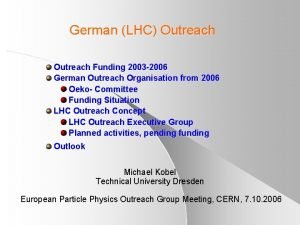German Pietism John Wesley and Methodism Pietism in





















- Slides: 21

German Pietism, John Wesley and Methodism

Pietism in Germany • The Pietistic movement in Germany, which arose as an internal evangelical corrective to the cold orthodoxy of the seventeenth-century Lutheran church, was quite different from the inner light mysticism (such as Quakers). • Pietism emphasized an internal, subjective, and individual return to Bible study and prayer. For them, biblical truth should be manifested daily in a life of practical piety by both lay persons and ministers.

Philip Spener • Philip Spener (1635 -1705), who became a Lutheran pastor in Frankfurt in 1666, was the initiator of the movement. He suggested that ministerial education should be biblical and practical, with internships for prospective ministers. Through him, Pietism flourished in Germany, Holland, and Scandinavia.

August Franke • August Franke (1663 -1727), who was influenced by Spener, was the organizer of Pietism. He, with Spener, found the University of Halle, which became a center of Pietism and missionary effort. Franke also organized a free elementary and a secondary school.

Characteristic of Pietism— 1 • a. Pietism brought a new stress on the study and discussion of the Bible and its application to daily practice and a pious life. • b. Pietism also emphasized the Holy Spirit as the Illuminator of the Bible. • c. Pietism emphasized good works as an expression of true religion. • d. The University of Halle became a center of missionary effort. Many missionaries from Halle were sent to Africa, America, Asia, and the islands of the Pacific.

Characteristic of Pietism— 2 • e. The scientific study of languages and church history was stimulated in an attempt to get at the true meaning of the writers of the Bible for daily life. • f. Indifference to doctrine on the part of Pietists led some to adopt the philosophy of idealism. • g. Pietism resulted in the founding of the Moravian church

Zinzendorf and Moravian Church • Zinzendorf (1700 -1760), who studied in Franke’s school at Halle and Wittenberg, provided Moravian refugees a home at Herrnhut on his estate and became leader of their organization, which was born spiritually in a prayer meeting on May 12, 1727. Zinzendorf’s main emphasis was a life of vital personal devotion to Christ.

Moravian Church • The Moravian church was organized as a separate church by 1742 with threefold organization: bishop, elder, and deacon. • Moravians sent missionaries to Greenland, the West Indies, North America, India, and Africa by 1750, long before William Cary went to India. They claimed to have one missionary for every sixty people at home.

The Influence of Moravian Church • The Moravians in North America moved from Georgia to Pennsylvania, where Zinzendorf tried to unite all German Protestants under the Moravians. • John Wesley was influenced by Moravians. Wycliff’s teachings had influenced Hus, the founder of the Bohemian Brethren, out of which the Moravian church emerged.

Methodism • The Methodist revival was the third religious awakening in England, coming after the sixteenth-century Reformation and seventeenth -century Puritanism. • Methodism was closely associated with John Wesley (1703 -1791).

John Wesley • John Wesley was the fifteenth of nineteen children born to Samuel and Susannah Wesley. Susannah taught her children at home and urged John to accept lay preachers. • John Wesley was narrowly saved from death when the Wesley home burned in 1709. Because of this, he often referred to himself as a “brand plucked from the burning. “ • John Wesley entered Oxford in 1720, and later was ordained a priest in 1728.

John Wesley—Cont. • After two years, John Wesley became the leading person in the “Holy Club, ” which included his brother Charles. The members of this club were nicknamed Methodists because of their methodical Bible study and prayer habits and regular social service in jail and the homes of the poor. • Between 1735 and 1737 John Wesley went to Georgia as chaplain. However, his ritualistic ideas, strict churchmanship, simplicity, and frankness created difficulties that he was forced to go home in 1737.

John Wesley—Cont. • On May 24, 1738, while listening to the reading of Luther’s preface to his Commentary on Romans, Wesley was “strangely warmed” and converted by help of Peter Bohler, a Moravian minister. This experience has been called the Aldersgate Experience of John Wesley. His brother Charles had a similar experience two day earlier. • John Wesley visited Herrnhut to study the Moravian church more closely.

John Wesley—Cont. • John Wesley organized a Methodist society and built a chapel in Bristol, England, 1739. (In 1784, the Methodist church in America set up its own national organization).

John Wesley and his Perfectionism— 1 • a. This was a belief in the possibility of Christian perfection in this life. • b. He believed that the love of God could so fill the heart of the believer that God’s love would expel sin and promote holiness of life.

John Wesley and his Perfectionism— 2 • c. This progressive process was to be initiated by an act of faith. Wesley made it clear that this was not sinless nor infallible perfection but rather the possibility of sinlessness in motive in a heart that was completely suffused with the love of God. • d. Mistakes in judgment might still result in bad moral consequences, but the possibility of achieving the ideal was there.

Methodism and French Revolution • Historians acknowledge that Methodism ranks with the French Revolution (1789 -1799) and the Industrial Revolution (roughly between 1760 and 1830) as one of the great historical phenomena of the century. Some historians say that Wesley’s preaching saved England from a revolution similar to that of France. • Methodism was to Anglicanism what Pietism was to Lutheranism.

John Wesley and George Whitefield • The Welsh Calvinistic Methodist Church came out of the efforts of George Whitefield and Lady Huntingdon. • In 1739 John Wesley broke with George Whitefield (1714 -1770) because of the latter’s Calvinistic theology. (Whitefield, who became a Christian in 1735, began open-air preaching in 1739, organized converts into societies, used lay preachers, and had a social emphasis with his orphanage. ) Later Wesley borrowed from Whitefield the idea of open-air meetings (or field preaching), itinerancy, and class meetings.

John Wesley and Methodist Church • John Wesley did not want to break with the Anglican Church. Not until after Wesley’s death in 1791 were the Methodists of England organized into a Methodist church in 1795 separated from the Anglican Church. • In 1784 John Wesley ordained two men as ministers and set apart Thomas Coke (17471818) as superintendent of the Methodist church in America.

John Wesley and his Influences— 1 • 1. Wesley insisted that the gospel should have an impact on society. • 2. Wesley opposed liquor, slavery, and war. • 3. Wesley helped to establish the first free medical dispensary in England in 1746. • 4. Wesley had an influence on Robert Raikes, the popularizer of the Sunday school movement, and on John Howard, the leader in prison reform.

John Wesley and his Influences— 2 • 5. By the time of Wesley’s death, a strong Methodist church was in existence in the United States. • 6. The Methodist revival resulted in the Evangelical Revival within the Anglican Church, which transformed the upper class of England helped England to become the great leader of nations and the keeper of world peace during the nineteenth century. • 7. Whitefield was the prophet, John Wesley the organizer, and Charles the songster of the Methodist revival.
 Low german vs high german
Low german vs high german Arborlawn united methodist church
Arborlawn united methodist church John wesley quadrilateral image
John wesley quadrilateral image John wesley family tree
John wesley family tree John wesley methodist
John wesley methodist John wesley methodist
John wesley methodist Entailment to kill a mockingbird
Entailment to kill a mockingbird Coração abrasado john wesley
Coração abrasado john wesley Juan wesley
Juan wesley Wesley brady
Wesley brady Wesley mission melbourne
Wesley mission melbourne Wesley mission victoria
Wesley mission victoria Wesley fung
Wesley fung Wesley harris mit
Wesley harris mit Frases susana wesley
Frases susana wesley Phoebe prince
Phoebe prince Wesley horng
Wesley horng Addison wesley longman
Addison wesley longman Pearson addison wesley math
Pearson addison wesley math Addison wesley longman
Addison wesley longman Wesley thio
Wesley thio Tanisha scott bronx masquerade
Tanisha scott bronx masquerade
